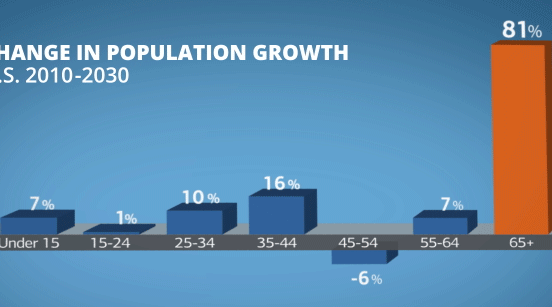How Does Life Insurance Work?
Life insurance forms the backbone of most middle-class financial plans. Because without this form of protection, the financial futures of many families would lie in ruins if something were to happen to the breadwinner.
Magna Life Settlements Overview
What is life insurance?
Life insurance is one of the oldest forms of insurance protection in the world. In a nutshell, life insurance provides financial protection for the dependents of a family’s primary breadwinner. Today it is also used for other purposes, such as to leave a legacy for heirs, pay off debts of the insured or to buy out the share of a deceased business partner’s interest in a company. Life insurance is sold around the world by hundreds of life insurance companies to millions of policy owners.
How Life Insurance Works
Although the actuarial calculations that determine a person’s life expectancy can be quite complex, life insurance at bottom is a very simple instrument. The policy owner pays periodic premiums to the life insurance company on a regular basis, and then the insurance company pays a death benefit to the policy’s beneficiaries upon the death of the insured.
There are four separate parties involved in any life insurance policy today. The policy owner pays the premiums on the policy and has the right to access the cash value in the policy (assuming that it is a permanent policy). The policy insured is the person upon whose life the policy is based. The beneficiary is the party that receives the death benefit upon the death of the insured. And, of course, the life insurance company issues the policy, collects the policy premiums and pays out the policy’s death benefit to the beneficiaries.
The owner and beneficiaries can be either a person or some other type of legal entity, such as a trust, corporation or partnership. But the insured has to be a person, because a policy can only be based on someone who will die a natural death. It cannot be based on a perpetual legal entity such as a corporation. However, policy owners can also be either the insured or the beneficiary (but not both).
There are two main types of life insurance. Term insurance is the simplest form of coverage, as it only provides death benefit protection. As the name implies, term insurance only stays in force for a specific period of time, or term. When the term is up, the coverage disappears unless the policy owner elects to purchase another term policy. There are several types of term insurance, such as convertible term, guaranteed renewable term and level term insurance. Convertible term can be converted into a smaller amount of paid-up permanent insurance.
Permanent insurance is a much more complex product. It is more expensive than term insurance and has a cash value component that accrues either dividends or interest over time. There are three main types of term insurance. Whole life insurance is the oldest form of permanent coverage available. It pays dividends to the policy’s cash value and is the most conservative form of permanent insurance. With whole life insurance, the policy premiums are fixed and cannot be changed once the policy is in force.
Universal life insurance pays interest into the policy’s cash value and is a more flexible form of permanent protection than whole life. Most UL policies today allow for flexible premiums and a flexible death benefit. Universal policies pay interest into the policy’s cash value, and the amount of interest paid will depend upon the prevailing interest rate environment.
Variable universal life is the riskiest type of permanent insurance. Variable policies invest the policy premiums in a selection of mutual fund subaccounts that invest directly in the stock, bond and real estate markets. It is possible for the policy owner to lose money in this type of policy if the value of the subaccounts falls below the amount of premium that has been paid into the policy. If the values fall far enough, the policy owner will get a cash call from the insurance company asking that more money be put into the policy in order for it to remain in force.
If you will have debts to pay off or loved ones to care for if something happens to you, then you probably need to carry some form of life insurance. Life insurance is a legal contract between the policy owner, the insured (who is also often the policy owner), the insurance carrier and the beneficiary. In this arrangement, the policy owner signs a contract giving him or her the legal responsibility to pay a predetermined amount of premium to the life insurance company while the insured person on the policy lives (or else for a predetermined length of time). The life insurance carrier in turn agrees to pay a predetermined amount, known as the death benefit to the beneficiary or beneficiaries on the policy. This is how all life insurance policies work.
Uses for Life Insurance
Life insurance can be used for many purposes. As mentioned previously, probably the most common use is to provide for the dependents of a family’s primary breadwinner is something should happen to that person. Other reasons include use in a buy-sell agreement, where life insurance death benefits are paid to the surviving partners of a business so that they can buy out the deceased partner’s share of the business. Life insurance can also be used to provide a legacy to the heirs of the insured, which they can use to meet their life goals, or to pay off the debts of the insured if they had outstanding obligations at the time of their death. Life insurance death benefit proceeds can ultimately be used for absolutely anything that the beneficiary wishes.
5 benefits of life insurance
Life insurance provides many benefits for policy owners and their beneficiaries. Five of the main benefits that come with life insurance include:
- Death benefit protection – This is perhaps the most obvious benefit that life insurance provides. This form of protection can cushion the loss of a family’s primary breadwinner or be used for a number of other reasons.
- Cash value savings – Permanent life insurance policies contain a cash value component that grows tax-free and can be accessed by the policy owner at any time for any reason.
- Tax Advantages – As mentioned previously, the cash value in a life insurance policy grows tax-free, which allows it to compound more quickly than other types of taxable investments.
- Can be Used as Collateral – The cash value in a permanent life insurance policy is counted as a hard asset that you can either borrow directly against or use as collateral for a loan.
- Structured Savings Approach – Permanent life insurance policies automatically put a portion of each premium paid into the policy’s cash value, thus “forcing” the policy owner to save money.
Term vs. Perm Life Insurance
There are two main types of life insurance policies. Term life insurance is the simpler type of the two. With term insurance, the life insurance carrier provides pure death benefit protection upon the death of the insured. Permanent life insurance is more complex in nature than term. With permanent life insurance, part of each premium that is paid goes into a cash value account that is linked to the policy. This cash value grows tax-free and builds up over time. It can be used somewhat like a savings account by the policy owner, who has the right to withdraw money from the cash value in the policy at any time. Because of its simplicity, term insurance is much cheaper than any form of permanent coverage. This means that policy owners can usually afford to pay for a much larger death benefit with fewer dollars than they can get with permanent coverage. But permanent coverage is guaranteed to stay in force for however long the insured lives as long as the premiums are paid. Buying term insurance can be considered “renting” life insurance coverage, while permanent life insurance is considered to be a form of ownership.
Types of Permanent Life Insurance Coverage
Permanent life insurance can be further subdivided into three categories. The first type of permanent coverage is called whole life insurance. This is by far the oldest form of life insurance coverage in existence today. As the name implies, it is designed to last for the insured’s entire life. The policy builds up cash value by paying dividends, which are technically partial refunds of premium paid. Whole life is the most conservative form of permanent insurance.
Universal life insurance is a more flexible form of coverage because the premiums are usually flexible and the policy pays interest into the cash value component over time instead of dividends. The rate of interest paid by the policy is dictated by the current interest rate environment, but there is usually at least a minimum rate of interest that is guaranteed. Many universal policies today pay interest that is linked to the performance of an underlying financial benchmark, such as the Standard and Poor’s 500 Index. This type of product is known as indexed universal life, or IUL.
Variable universal policies represent the final frontier in life insurance products. These policies are just like straight universal policies or IULs in nature, except that their cash values are invested in mutual fund subaccounts that rise and fall in tandem with the stock, bond and real estate markets. It is possible for the policy owner to lose money in this type of policy if the values of the subaccounts decline. Variable universal life insurance policies are generally regarded as one of the most, if not the most complex type of financial product available in the marketplace today.
How Much Life Insurance Do I Need?
Knowing how much life insurance to carry is usually the bedrock of any financial plan for most clients. The answer to this question depends upon several factors, such as the financial condition of the policy owner and the size and ages of his or her family. For example, if you are single and have no debt, then you may need little or no coverage. But if you have three kids under age 12, a spouse who does not work and a large mortgage, then you probably need a large amount of coverage. Most financial planners would recommend that someone in the latter example should purchase a policy with a death benefit equal to at least five to ten times their annual salary. At the very least, the coverage should be enough to pay off the mortgage and any other debts carried by the insured. But in many cases, additional funds will be needed to pay for college educations, special needs expenses, funeral and burial costs and other assorted items. These expenses would also most logically be covered with life insurance.
Life Insurance Beneficiaries
As mentioned previously, the beneficiary of a life insurance policy is the party who receives the death benefit when the insured dies. The beneficiary can be a single person, two more persons, a corporation, a partnership, a trust or any other legal entity that is capable of taking material receipt of the funds. Some beneficiaries opt to receive their entire death benefit in one lump sum, while others choose to receive it over a period of time, such as five years or even their entire life expectancies.
So what are the Best and Worst Types of Life Insurance for Me?
There is no one single right answer to this question. The only concise answer that a financial planner could give you is that it all depends. It depends upon your financial situation and life circumstances as well as your financial goals and objectives. If you are a young parent with small children and your spouse doesn’t work, then a permanent policy is probably not right for you at this point. If you are getting up in years and decide that you want to leave a legacy for your heirs, then a term policy is probably not a good fit, as these policies become increasingly expensive for older policy owners and eventually become prohibitively expensive at some point. Consult with your financial advisor or insurance agent for more information about life insurance and which type is best for you.
Life insurance Payouts
Life insurance death benefits can be paid out in several different ways, depending upon the needs of the beneficiary. Some of these options include:
- Lump-sum payout – This is probably the most popular form of payout, as the beneficiary receives the entire death benefit in one single payment.
- Straight life – The life insurance carrier will make a series of payments to the beneficiary based upon his or her (or their joint) life expectancy.
- Period certain – A portion of the death benefit is paid on a periodic basis for a set period of time.
- Life with Period Certain – The death benefit is paid out based on the life expectancies of the beneficiary, but will pay a guaranteed minimum amount if the beneficiary’s life is cut short.
- Joint Life – The death benefit is paid out based on the joint life expectancies of a couple.
- Joint Life with Period Certain – The same as joint life, except that a guaranteed minimum number of payments must be made.
Bottom Line for Life Insurance in 2020
Life insurance has become a much more versatile product in recent years with the advent of universal and variable universal life policies. It can be used to accomplish a number of financial goals and still forms the backbone of most middle-income family financial plans. Consult your financial advisor to find out more about life insurance and whether it is right for you.








